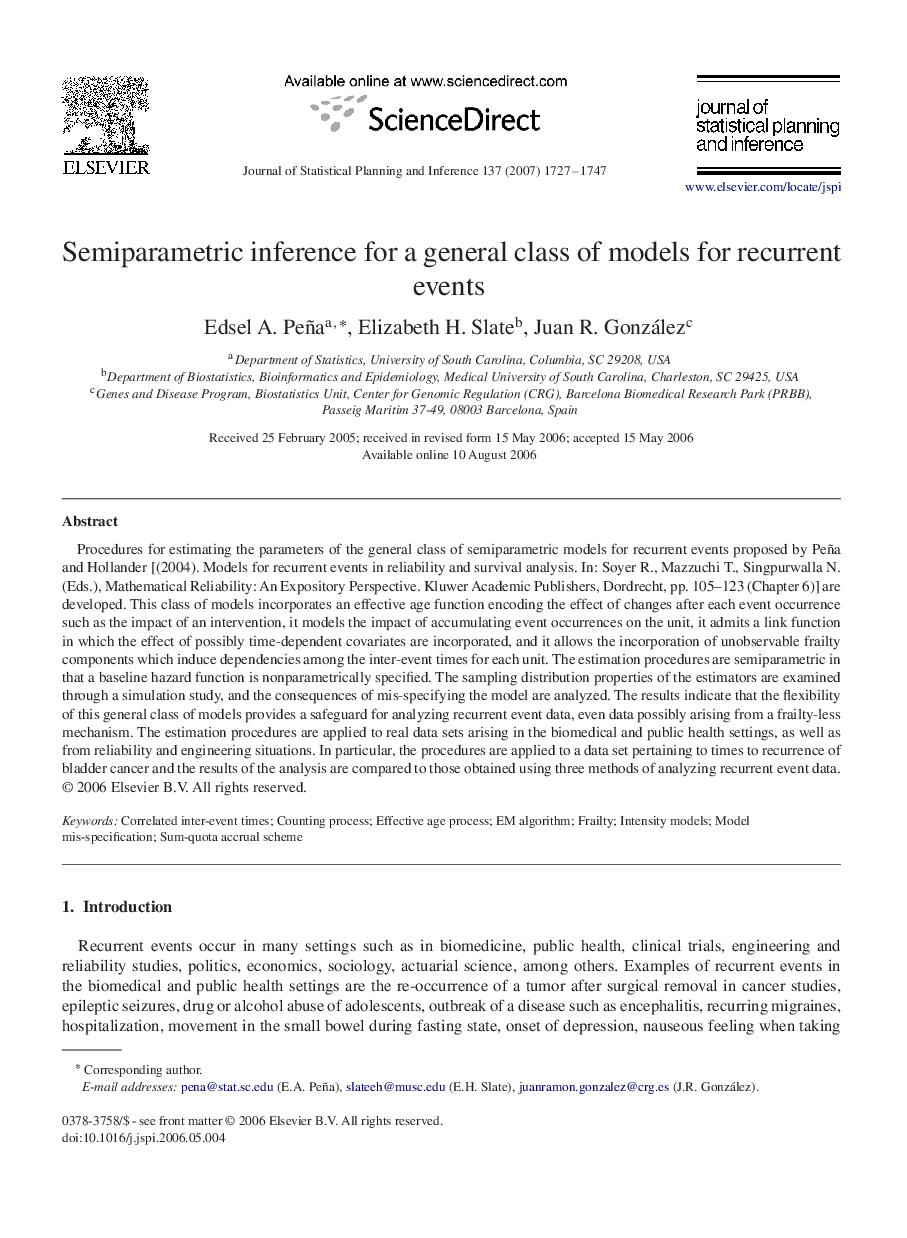| Article ID | Journal | Published Year | Pages | File Type |
|---|---|---|---|---|
| 1150023 | Journal of Statistical Planning and Inference | 2007 | 21 Pages |
Procedures for estimating the parameters of the general class of semiparametric models for recurrent events proposed by Peña and Hollander [(2004). Models for recurrent events in reliability and survival analysis. In: Soyer R., Mazzuchi T., Singpurwalla N. (Eds.), Mathematical Reliability: An Expository Perspective. Kluwer Academic Publishers, Dordrecht, pp. 105–123 (Chapter 6)] are developed. This class of models incorporates an effective age function encoding the effect of changes after each event occurrence such as the impact of an intervention, it models the impact of accumulating event occurrences on the unit, it admits a link function in which the effect of possibly time-dependent covariates are incorporated, and it allows the incorporation of unobservable frailty components which induce dependencies among the inter-event times for each unit. The estimation procedures are semiparametric in that a baseline hazard function is nonparametrically specified. The sampling distribution properties of the estimators are examined through a simulation study, and the consequences of mis-specifying the model are analyzed. The results indicate that the flexibility of this general class of models provides a safeguard for analyzing recurrent event data, even data possibly arising from a frailty-less mechanism. The estimation procedures are applied to real data sets arising in the biomedical and public health settings, as well as from reliability and engineering situations. In particular, the procedures are applied to a data set pertaining to times to recurrence of bladder cancer and the results of the analysis are compared to those obtained using three methods of analyzing recurrent event data.
